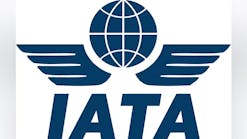Taking Charge of Alternator Problems Part II
Multi-engine alternator charging system troubleshooting
By Winston Greer and Mike McCluskey
September 2001
Basic theory Let’s review the basics. An alternator is an electro-mechanical device that converts mechanical energy to electrical energy. A regulator is an electronic device that controls both the voltage and the field current of an alternator. Fundamentally, all of this sounds quite simple — and it is, but interesting outcomes can occur if everything is not "just right." Many of the topics covered in this article are expansions on the fundamentals discussed in the April 2001 installment, Taking Charge of Alternator Problems. The fundamentals of troubleshooting single-engine charging systems are the same as those for troubleshooting multi-engine applications. However, significant differences do exist between single and multi-engine applications. This expanded treatment of the subject should help to resolve some of the more perplexing problems associated with multi-engine alternator systems. High Frequency Regulators Recently, the major reason for changing regulator equipment is to upgrade to newer designs that operate at a higher frequency than earlier designs. Higher frequency (faster) regulators tend to eliminate the "wagging needle" on ammeters that earlier-designed regulators were prone to cause. These older regulators generally operate at a frequency close to the alternator frequency. As a result, the regulator tries to "follow" the alternator and vice versa, causing the pulsing or wagging of the ammeter indicator. Another major reason for changing to newer-design regulator equipment is the advantage of built-in ground-fault protection. From a cost-to-benefit ratio standpoint, this is one of the great newer developments in regulator design. With earlier-designed regulators, a short in the alternator field would "blow" the regulator. With ground-fault protected regulators, the regulator is not damaged, and an LED comes on to alert of the ground-fault condition. This is also a great diagnostic tool. If an alternator keeps dropping off-line and the LED comes on, then you know the failure mode is the field circuit. This feature saves a lot of time (and money) when a ground-fault problem occurs. Some technicians keep this type of regulator in their toolbox and utilize it as a diagnostic instrument when the airplane they are working on doesn’t have the newer-design type of regulator.
Paralleling ramins the most challenging aspects of installing alternators or regulators i twin-engine applications.
Paralleling
Paralleling remains the most challenging aspects of installing alternators or regulators in twin-engine applications, and it is here where those "interesting outcomes" might first become apparent. An airframe manual will, in most cases, give you instructions on the proper procedures to follow. Electrosystem’s Paralleling Procedure Service Instruction SI-0101 may also prove helpful, especially if the aircraft electrical system has been upgraded.
One circumstance that occurs with increasing regularity is the installation of regulators that are not original equipment for that particular aircraft. In this case, the manufacturer would have included regulator-specific paralleling instructions and may differ from the original equipment regulator paralleling instructions outlined in the aircraft manual. These instructions are specific to the initial installation, and may differ from those supplied by a different regulator manufacturer.
In most cases, when upgrading to the new, high frequency regulators, they must be replaced in pairs to allow for the units to "talk" to each other. If you replace the old style Linear regulator with the new style high frequency switching regulator the units won’t talk to each other and paralleling the system will be virtually impossible. Generator to Alternator Conversions
If you have an aircraft that uses generators, then you might want to consider converting to alternators with a Supplemental Type Certificate (STC). Since most general aviation generators have not been manufactured in over 30 years, approved generator parts are getting harder and harder find. In most cases, alternators weigh less than generators, and are more reliable. Furthermore, in some cases, it costs less to convert to alternators than to have the generators
overhauled.
When considering the conversion from
a generator system to an alternator system, the first thing to determine is what STC’s are available for your aircraft. One good place to start looking is the FAA website http://av-info.faa.gov/stc/ where you may search using many different parameters.
STC’s come in every conceivable form, from "paperwork-only" where you obtain the parts yourself and make the wiring harness, to companies that provide the STC and perform the installation. STC installations at the STC-holder’s
facility are generally very good, and even more attractive if you are close to one of their facilities and convenience is the greater consideration.
But, getting an STC kit seems to be the most popular option. There are many compelling reasons for this popularity. A good STC kit has everything needed for the conversion
including instructions, parts, and required FAA paperwork; all you have to provide for your customer is the installation labor. STC-holder installations may be too expensive or located too far away to be convenient. With a paperwork-only STC, you have to find the parts: alternators, circuit breakers, switches, wire, brackets, pulleys, etc. Then you must make the harness, and perform the installation. It is not a good idea to merely add the extra wires required for the conversion; the old wires probably have insulation that is hard and cracking and could cause new problems in a relatively short period of time. In fact, old wiring alone in some cases might be justification enough to perform a conversion.
No matter which option you choose, you can know that your electrical system is up-to-date, with parts and service more readily available.
System output "imbalance"
Although single-engine troubleshooting tips apply easily to multi-engine applications, multi-engine systems can present a host of unique challenges. Always remember to start with the obvious solutions: make certain that the alternators on both engines are properly installed, the wiring is properly connected and routed, the belt-tension is appropriate for belt-driven units, the battery is adequately charged, etc. However, many pilots and mechanics think that after paralleling is complete, both alternators should produce exactly the same amount of current on each side. This is not usually true. As much as 10 amperes difference may be normal. Many variables such as the wiring, the regulators, the ground system and the alternators themselves may contribute to the imbalance between the two sides. If the difference is less than 15 percent (e.g., about 10 amps for 70-amp alternators), then searching for the cause may require more time than you can spare, in order to achieve very little, if any, improvement.
Air gap differentials
If imbalance in the two alternators exceeds about 15 percent, then improvement should be possible. Certainly, no two alternators perform exactly alike — this is especially true in overhauled units. Most of the components in an overhauled unit have been used at least once. These components will, in most cases, have wear differentials that contribute to output imbalance. A good example is the air gap between the rotor and the stator, which may cause a considerable difference in the current output. All else being equal, if one alternator has a 0.010-inch air gap, and a second has a 0.005-inch air gap, there will be a noticeable difference in the output, especially at low RPMs. While the physics are not necessarily intuitive, the effects of the difference in the magnetic flux producing the current vary exponentially with distance. Simply stated, doubling a difference in the air gap of two alternators will result in a rate of change greater than double that value. Just remember that small differences in air gaps can have a large effect on output differences. When the installation, or more likely the customer requires a closely balanced system the best option may be to install new units instead of overhauled ones. Even then, they will not likely produce exactly the same output, though the difference should go unnoticed.
Drive gears and belts
In the case of gear-driven alternators, serious imbalance may be caused by the coupling gears. If one coupling gear is slipping, then the alternator may not turn fast enough to produce the same amount of current. There are service bulletins addressing this problem with detailed instructions on how to properly test the coupling gears. It is a good idea to test the coupling gear any time the alternator is changed. These gears have rubber inserts that tend to become hard and brittle with age and heat. Unfortunately, in most cases the coupling gear costs much more than the alternator, so be absolutely sure that it is defective before you purchase a new one. On belt-driven alternators, proper belt tension is very important. Engine and alternator manufacturers publish service instructions on the proper tensioning of the drive belts. To ensure performance and reliability, these service instructions should be followed closely. If the alternator belt is too loose, it may slip, and the alternator will not turn at the speed necessary to produce the required output under load. If the belt is too tight, it may cause bearing failure.
Wiring, Terminals, and Connectors
As previously mentioned, another unique challenge is properly maintaining the electrical system wiring. It doesn’t require higher math to recognize that there may be at least twice as much electrical wiring in a twin-engine system as there is for a single-engine system. This means, of course, that there are more areas where insulation can become chafed, and more potential for connectors to loosen and/or corrode. Make sure that the terminal ends are clean and tight and that there are no broken wires or wiring with chafed insulation. Good luck — this can often be like finding the proverbial "needle in the haystack."
Ground system problems
As we noted in the April 2001 AMT "Radio Noise" sidebar, the ground system can present some of the most serious troubleshooting challenges. Many technicians change alternators, regulators, wiring and other charging system components only to find that the aircraft has a bad ground system. If you have more than 0.2 ohms resistance in the ground system from either of the alternators to battery ground, it is time to start cleaning connections. Recall that other "usual suspects" of a bad ground can be the field circuit breakers or alternator switches. To troubleshoot this, measure the voltage at the bus bar with the system turned on and the engines not running, then check the voltage going into the regulator. If any breaker or switch has more than a 1/2-volt difference from the input side to the output side, then it is probably defective, and should be replaced. To determine which one, you will have to go directly to the switches or circuit breakers.
Anomalies associated with temperature variations
Another consideration in setting up the alternators is temperature. Alternator current is inversely proportional to temperature; that is, output decreases as alternator temperature increases. You might have two alternators perfectly paralleled when cold, but after they warm up they become unacceptably out of balance. Have the pilot verify the balance on the first flight after an alternator is replaced or reinstalled; you may have to adjust the system when the plane returns.
Some regulator models are also more heat-sensitive than others. The installation location of the regulators might also increase (or decrease) this effect. Some regulators even require a heat sink to dissipate the heat that they generate, so (once again pointing out the obvious) be sure to read the manufacturers' instructions. If you don’t have sufficient information, don’t hesitate to call the manufacturer for technical assistance.
When aircraft charging systems go wrong, it can be tempting to look at the situation from the bad side and get frustrated. But bad perspectives can result in bad outcomes. Hopefully these articles on charging system troubleshooting have provided information that can help keep your perspective optimistic. Here's to your successful outcomes.
Mike McCluskey is a Technical Service Representative and Winston Greer is Vice President of Quality for Electrosystems, Inc. in Fort Deposit, AL.
The Source
Additional resources....
Electrosystems Inc. Product Support group (888)-461-6077
Aero Electric, Inc. Product Support group (316)-943-6100







